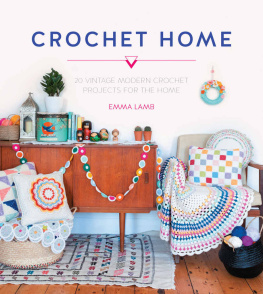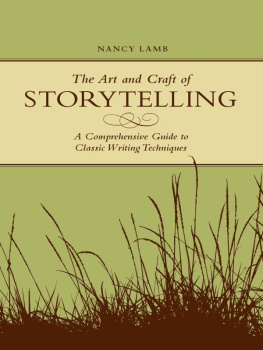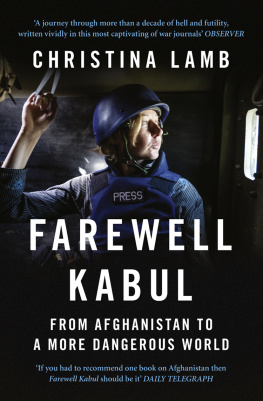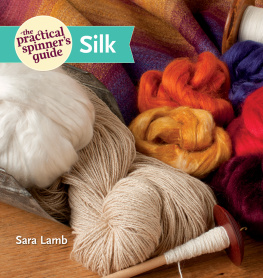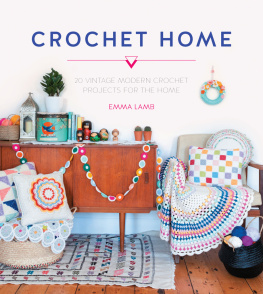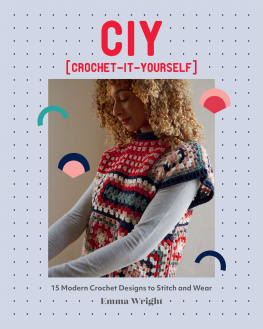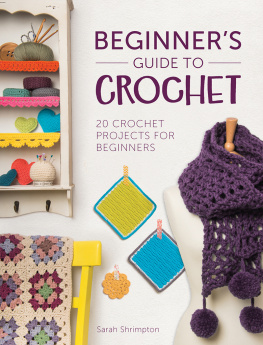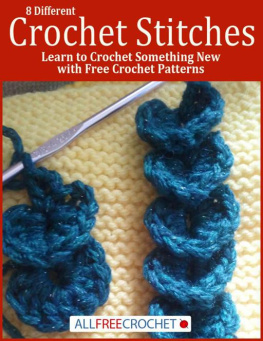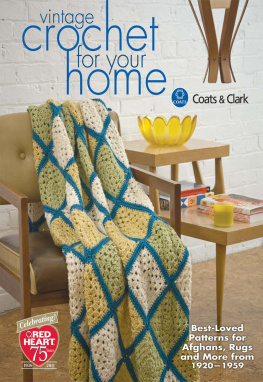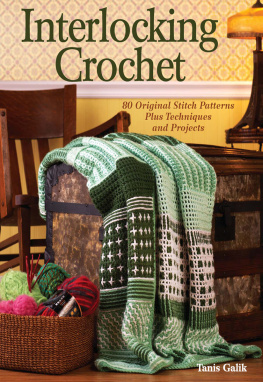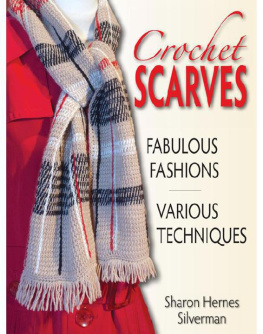CROCHET HOME
20 VINTAGE MODERN CROCHET PROJECTS FOR THE HOME
EMMA LAMB

www.stitchcraftcreate.co.uk
CONTENTS
WELCOME TO MY CROCHET HOME!
Here you will find perfectly pretty pillows, fabulous granny-chic inspired potholders, beautiful blankets and throws and delightful decorations to crochet. I have included some of my most popular designs to date, such as the Tiny Squares Patchwork Cushion, as well as my original flower garland and circular floor throw, both re-invented especially for this book take a peek at the colourful Scarborough Rock Floor Throw and Flower Garlands. Sprinkled between these signature pieces are a few new gems, including my favourites, the Day Dreamer Dreamcatcher and the epic, stash-busting Granny Chic Pinwheel Blanket.
For each project I have worked tirelessly to source the most perfect yarn, chosen either because of its beautiful, unique quality or because of its vast range of colours youll find that some amazing fibres have been used such as wool, linen, paper, alpaca and organic cotton, and sometimes you will have the whole spectrum to choose from.
I hope you have fun discovering new yarns, enjoying a healthy dose of colour and creating beautiful objects for your home. Happy crocheting!
Emma

GETTING STARTED
CHARTS
All twenty patterns in this book are written using UK crochet terms, and each design includes the relevant crochet charts to complete the project.
These charts use the standard universal crochet symbols; there is a full list of these symbols, including both UK and US terminology, to familiarize yourself with before diving headlong into the patterns (see ).
If you are unfamiliar with any of the stitches used, refer to the handy section, which includes a step-by-step guide for each type of stitch.
Crochet charts read exactly as a piece of crochet is created. Motifs worked in the round start at the centre, beginning with the foundation chain or adjustable ring, and are read anticlockwise, just as they are crocheted, with the start of each new round being numbered accordingly. Generally, motifs worked in rows begin at the bottom or bottom left corner with a foundation chain; odd numbered rows are then worked from right to left and even numbered rows are worked left to right. One more thing to note: the crochet charts do not include information on colour placement; for this, please refer to the written pattern or any diagrams provided.

TENSION
The patterns also include information on tension (gauge) and the type of tension swatch you will need to work before you begin your project. In most cases it will be a blocked version of one of these three samples:
a standard granny square motif worked in three treble shells of up to eight rounds, depending on the weight of yarn being used
a simple circular motif worked in treble stitches with a twelve stitch increase in each round, up to eight rounds as before
a square swatch with rows of treble stitches built from a foundation chain
Take note of how each finished project should be blocked and use this method for blocking your tension swatch (see ). Measure your stitch count over a 10cm (4in) grid to see if it matches the required tension. If it does, you can get started on your lovely project. However, if you have too many stitches you will need to go up a hook size, and if you have too few you will need to go down a hook size. You may need to experiment a little with hook sizes until you get the tension right, but this is an essential part of any project. If you do not match your tension accurately your project may not come out at the right size, or worse you may end up running out of yarn!
Checking your tension carefully is especially useful when substituting the recommended yarn with your own favourite. Once you have accurately matched your tension you will then need to cross reference the meterage of the recommended yarn with your substitute to determine how much you will need to complete your project. Each pattern already includes a reasonable allowance so you should aim to match the quantity of the stated yarn as closely as possible.
BLOCKING
Most of the projects in this book require steam blocking or pressing. This is my preferred method for blocking crochet as it is quick, easy and less likely to distort the finished piece than using the wet-blocking process. Crochet fabric is much denser than knitted fabric, using up to a third more yarn than knitting, so it will hold more water than knitted fabric during the wet-blocking process, making it heavier and more prone to stretching or distorting in ways it shouldnt.
To steam block you will need both a steam iron and a press cloth. A press cloth can be a simple sheet of fine cotton, or any heat-proof fabric that will allow steam to pass through it while protecting your projects from accidental scorching. Small projects can be easily blocked on an ironing board but for a large blanket you will obviously need a larger surface, such as a floor. To protect your floor lay out old blankets or sheets to a size larger than your project (vintage wool blankets are ideal here), then lay your project on top smoothing out any creases. For circular and lap blankets, start at the centre and work outward gently adjusting as you go until the final shape lies neatly, and using a tape measure to ensure even proportions. For larger blankets, it is best to start at a corner and fan out from there.
PATTERN ABBREVIATIONS & SYMBOLS
GENERAL ABBREVIATIONS
UK crochet terms are used throughout the written project patterns; please be aware that these differ slightly from US stitch terms. The crochet charts, however, use standard stitch symbols and both UK and US translations are included here for ease of reference. Note that US stitches are referenced [in brackets] in the section.



REPEATS WITHIN PATTERNS
When following repeated pattern instructions, note that the repeats marked with asterisks denote the total number of repeats.
GARLANDS & DECORATIONS

FLOWER GARLANDS
Some crocheters find the humble granny square to be their crochet therapy, but for me its flowers in all colours, sizes and shapes. It is my opinion that an hour spent with a crochet hook and gorgeous floral-coloured yarn making a pile of pretty petals is an hour spent very wisely indeed. I have designed three pretty floral motifs and two sizes of leaf for this garland. The pattern instructions describe one possible arrangement for stringing them together, but with a little imagination they can be combined in dozens of different ways with almost endless colour combinations. Let your imagination run free!

